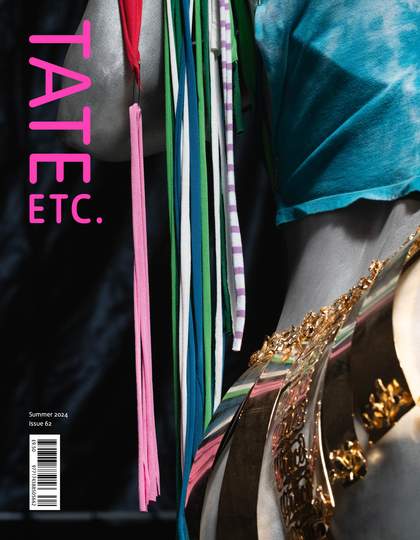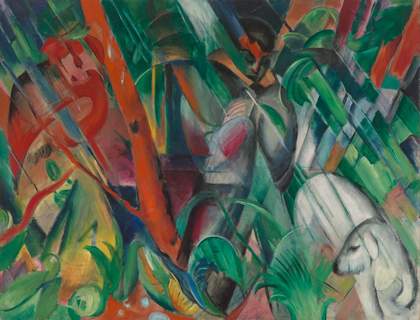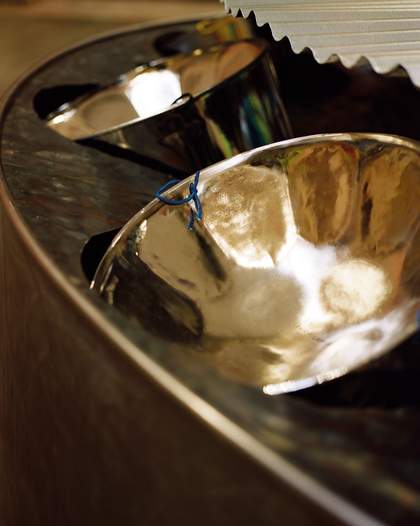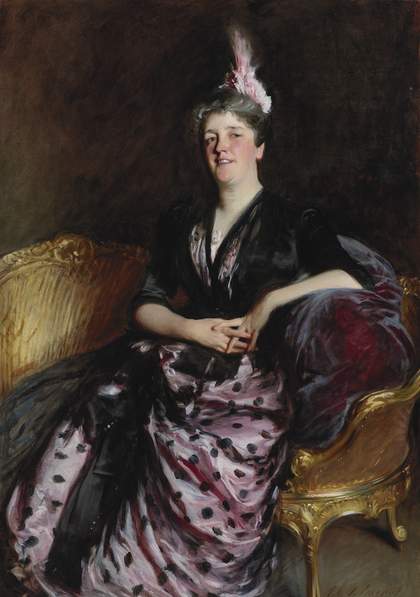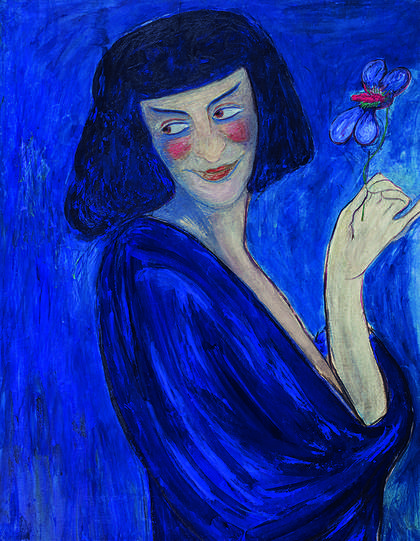
Marianne Werefkin The Dancer, Alexander Sacharoff 1909 Fondazione Marianne Werefkin, Museo Comunale d'Arte Moderna, Ascona
The rouge on the cheeks and lips against pale skin highlights the striking features of the face: a prominent nose, thick brows, large eyes and full lips. The body, draped in a deep blue shroud, appears proportionately masculine. The body’s side-facing orientation, combined with a twist of the neck to bring the head to the centre, continues the fabric’s spiral, the sidelong gaze punctuated by a sly smile suggestive of an enigmatic feminine form. This contrasts with the only straight element in the picture: the stem of the flower. The delicate way the flower is held – wrist bent and pinky finger raised – completes the queering of the image. The entanglement of a masculine physique and feminine body language creates an aura of mystique.
This image reminds me of the physical study I undertook in 2016 for my performance work titled Princess, in which two Filipino performers embodied the physicality and vocality of Snow White. We meticulously mimicked the postures of Disney princesses as depicted in widely distributed children’s colouring books. As we absorbed and processed Snow White’s physicality, it became apparent that hidden beneath the performance of grace and pleasantness was a crooked and unstable body posture. This princess’s physicality is coupled with housework, as Snow White constantly engaged in domestic labour for the Queen and the dwarves to justify her existence. It became a study on the labouring body performing the pleasantness expected of domestic servitude.
The performance of the feminine sits differently in different bodies.
The Dancer, Alexander Sacharoff is included in the exhibition Expressionists: Kandinsky, Münter and The Blue Rider, at Tate Modern until 20 October.
Eisa Jocson is a choreographer and dancer from the Philippines, who trained as a visual artist and has a background in ballet.
Presented in the Eyal Ofer Galleries. Supported by the Huo Family Foundation with additional support from Tate Patrons and Tate Members. The media partner is The Times and The Sunday Times. Organised by Tate Modern in collaboration with Lenbachhaus Munich. Curated by Natalia Sidlina, Curator, International Art, Tate Modern and Genevieve Barton, Assistant Curator, International Art, Tate Modern.

